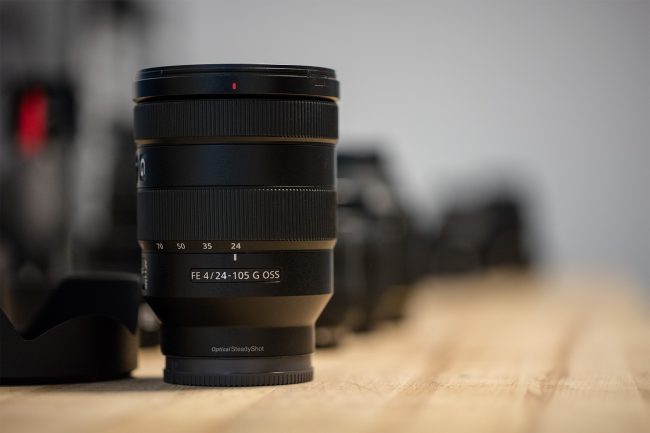Geek Articles
MTF Tests of the Sony FE 24-105mm f/4 OSS
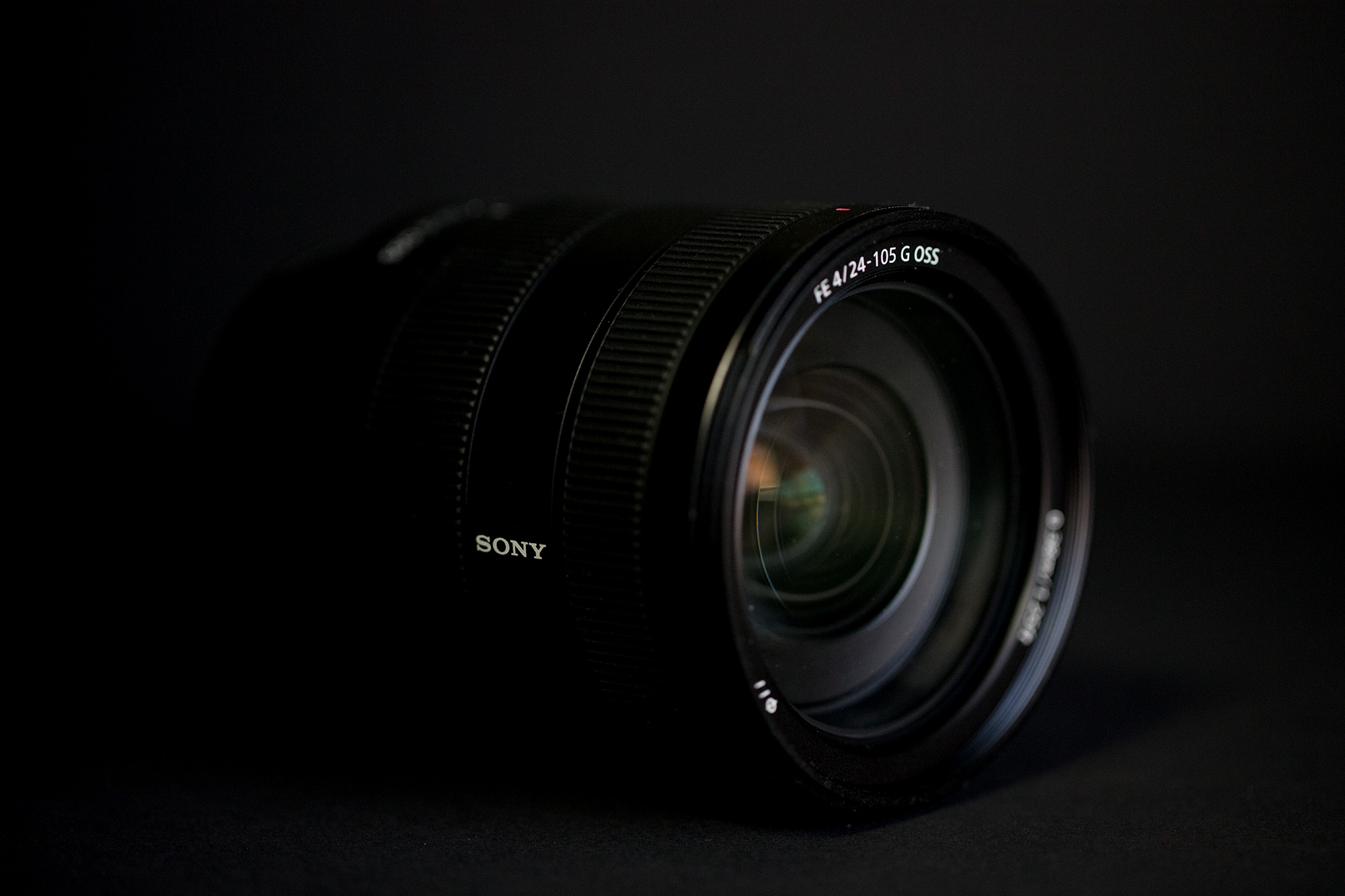
Or ‘My Last 24mm-105mm Lens Test Ever’
Obviously, I have angered the Lens Testing Gods, since for the second post in a row I’m testing 24-105mm f/4 lens; this time the Sony 24-105mm f/4 OSS lens. As I’ve mentioned in the post on the Sigma 24-105mm f/4 many initials Art lens, while these are indispensable photographic tools, I despise testing 24-105mm f/4 lenses. They are technically a total pain to test, and historically they’re all pretty much the same.
So, yes I am bitter and feeling a bit sorry for myself. I mean, two weeks ago I’m doing some double-naught-secret-agent testing on a spectacular wide aperture prime lens with a resolution that made my jaw drop at frequencies I wasn’t sure was possible to test. Next thing I know, I’m spending two weeks testing 24-105mm f/4 zooms hoping for signs of adequacy. That should tell you all you need to know about my predispositions coming into this set of testing.
About Today’s Subject
The Sony 24-105mm f/4 OSS adds a do-it-all-lens to Sony’s line up. Much as I don’t like testing these, I’m the first to admit they are extremely practical and useful lenses, covering everything from moderate wide-angle to slightly telephoto. With OSS it should make a great walk-around or travel lens.
The Sony FE version has some other nice features. At just 663 grams, it’s lighter than any of the DSLR 24-105 f/4 lenses you might (or might not) have been using with an adapter. The 77mm front element makes filters reasonably inexpensive. The $1298 price tag does not make it inexpensive, but it’s about par for the SPP (Sony Price Premium) we’re all used to.
Before I got around to testing this lens, there was a lot of talk on the internet about how superbly sharp it was, but then there is talk on the internet about what’s the fastest dump truck. There were also rumblings about how much vignetting occurred. There’s been a lot of discussion of what’s being referred to as focus shift but is missed focus at smaller apertures. Some of those things we can look into. Some we can’t.
So as always, this is an optical test. It evaluates the optics of the lens. I don’t have any of the very important information about how the lens handles, how quickly it focuses on a camera, or how well the OSS works. You’ll need to read a real lens review for that stuff.
Optical Tests
If you don’t know that MTF stands for Modulation Transfer Function (1, 2, 3, 4), then just look at the pretty graphs and remember that higher is better, the left side of the graph is the center of the image, and the right side is the edge.
One thing to note about optical tests on this particular lens: Sony has built a lot of autocorrection into the raw files that correct distortion (it’s high at both ends) and vignetting (a lot at 24mm) in images taken on-camera. We’re testing just the lens. These factors shouldn’t cause a significant difference between ‘on camera’ testing and our testing, but they could have some minor effects. You might also notice some differences from reviews that test standard raw files and raw files with the ‘autocorrect’ function turned off.
MTF
At 24mm
At 24mm we see good center resolution with a smooth drop-off as we head to the edges. There’s a fair amount of astigmatism-like separation of the sagittal and tangential lines, but it’s not bad for 24mm in a zoom lens.
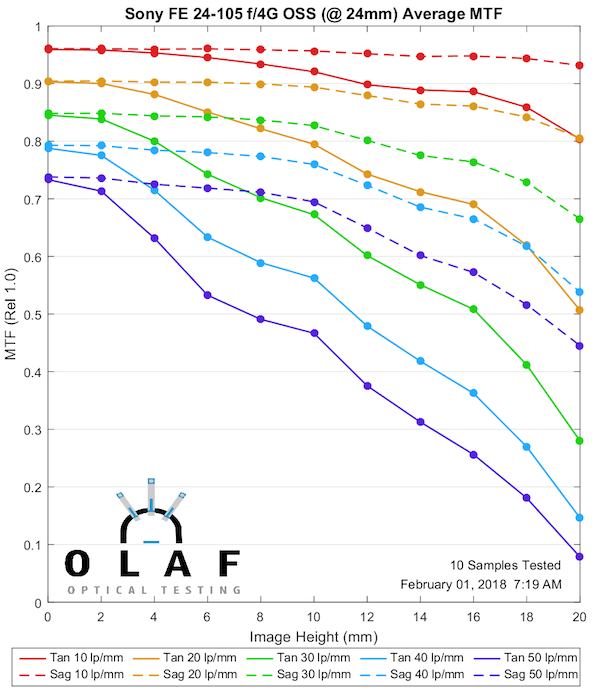
Olaf Optical Testing, 2018
At 70mm
At 70mm the center resolution isn’t as sharp, but it’s still pretty good and is maintained to the edges of the field with a lot less sagittal-tangential separation.
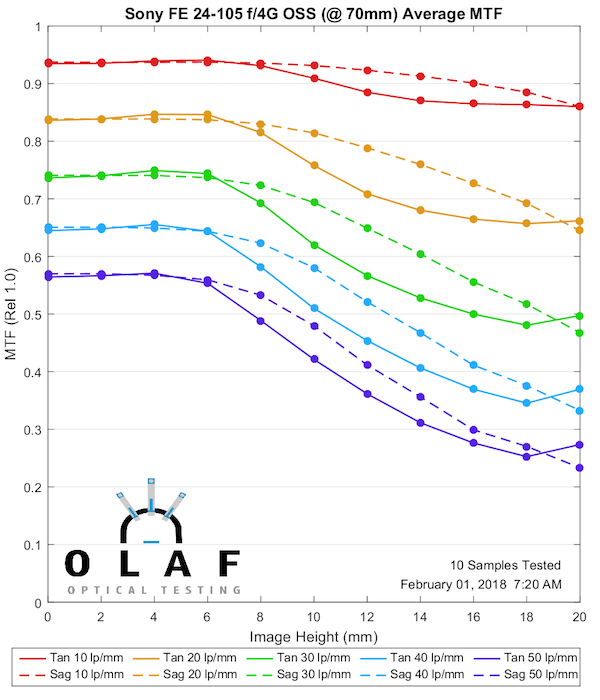
Olaf Optical Testing, 2018
At 105mm
Here’s a bit of a surprise! The Sony is the first 24-105mm I’ve seen to maintain its sharpness out at 105mm. That’s quite unique for the ‘another one like the other ones’ 24-105mm zoom lenses. My usual recommendation for 24-105mm lenses is ‘only use it past 70mm if you don’t have time to change lenses’ but the Sony is actually a little better at 105mm than it was at 70mm.
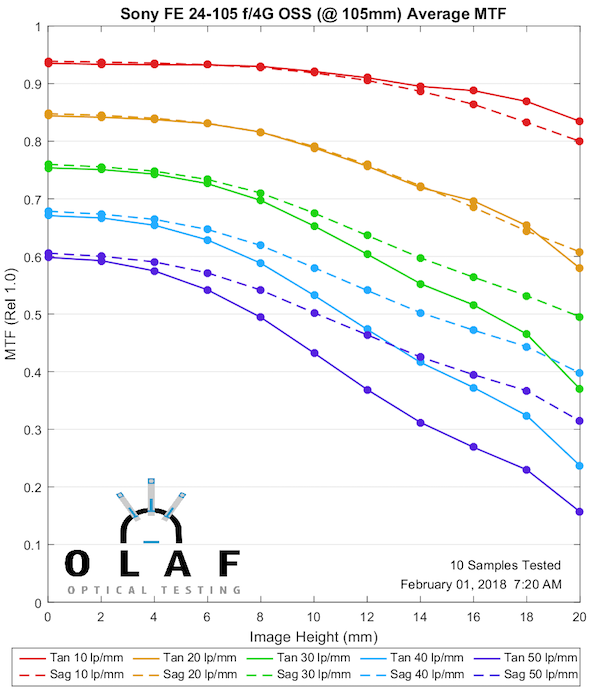
Olaf Optical Testing, 2018
Sample Variation
At 24mm
There’s almost no copy-to-copy variation in center sharpness, and the variation is well controlled at 24mm overall.
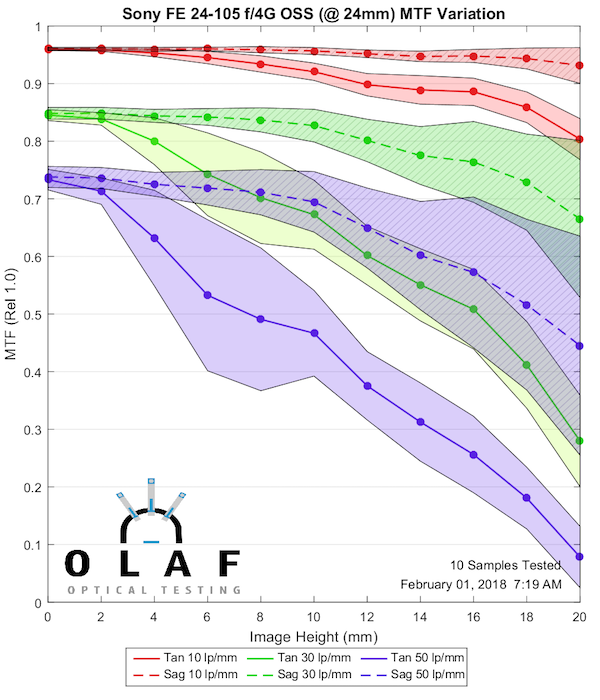
Olaf Optical Testing, 2018
At 70mm
We do start to see a tiny bit of center variation at 70mm, but for a 24-105mm lens this is quite well controlled. (Yes, I know, that’s kind of like being the tallest short person; but still this is a pleasant surprise.)
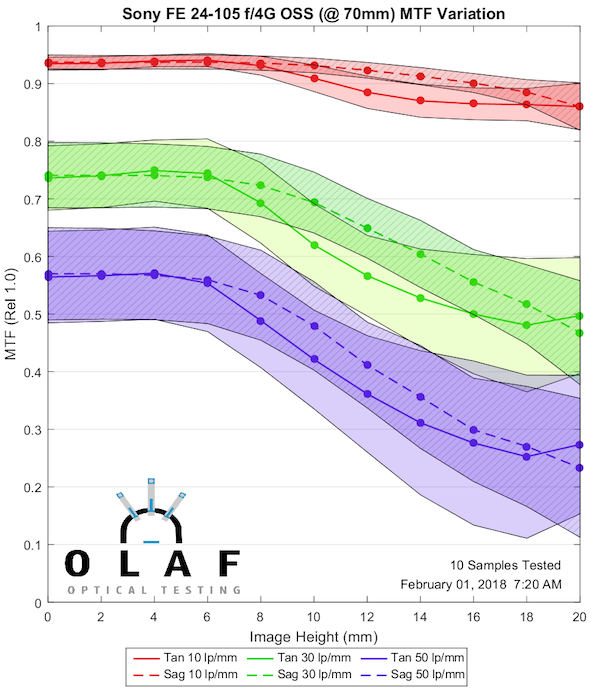
Olaf Optical Testing, 2018
At 105mm
Again, at 105mm, where most 24-105mm lenses have the most sample variation, the Sony still maintains a good consistency.
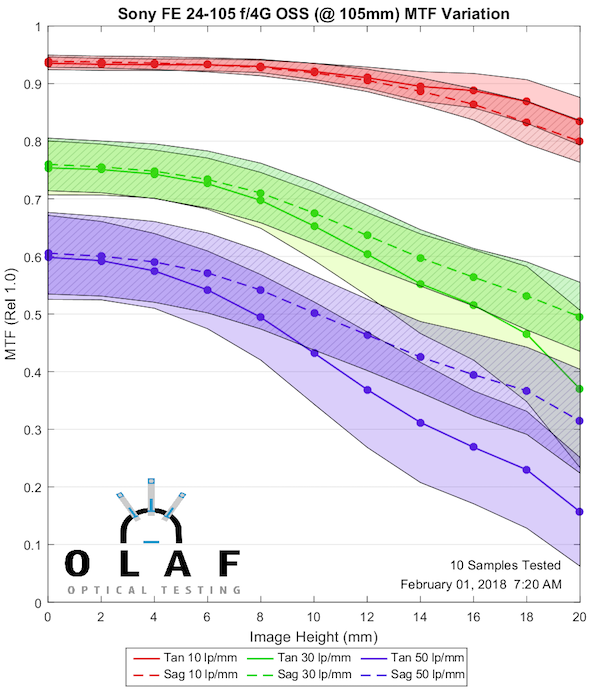
Olaf Optical Testing, 2018
The Canon 24-105mm f/4 IS II has been the standard for consistency in this range zoom, but the Sony is a bit better (as was the Sigma we tested last week). So, let me repeat, because in the past I’ve been pretty harsh about Sony sample variation. While 24-105mm zooms tend to have a a high variation, the Sony does not; it’s very consistent in copy-to-copy.
Sony FE 24-105mm f/4 OSS vs. Sigma 24-105mm f/4 OS Art
At 24mm
The Sigma has a fantastic center resolution at 24mm, the best of any lens of this type. The Sony isn’t quite that good, but it’s relatively close and is actually a bit better out at the edges of the image.
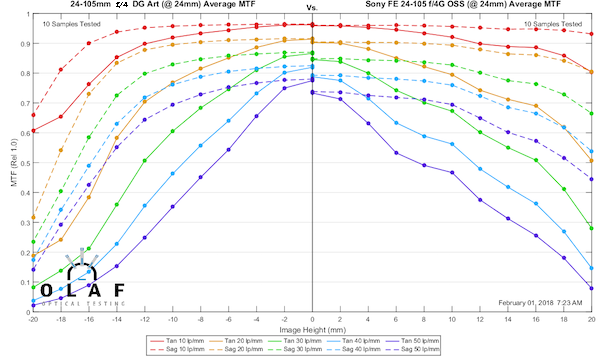
Olaf Optical Testing, 2018
At 70mm
The Sigma still is a little better in the center of the image at 70mm, but the Sony maintains its resolution almost without change in the center 1/3 of the image, becoming a little better than the Sigma from that point to the edge.
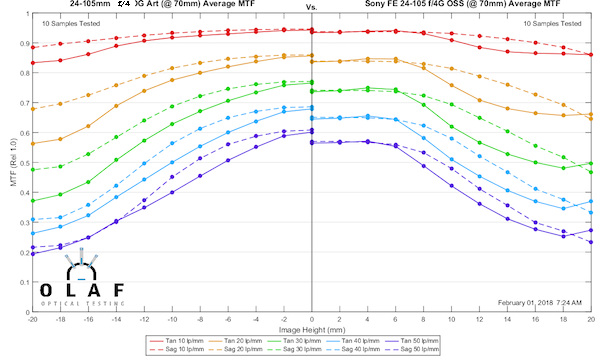
Olaf Optical Testing, 2018
At 105mm
At 105mm the comment I made about the Sony maintaining sharpness at 105mm better than other zooms of this range becomes apparent. The Sigma and Nikon 24-120mm VR lenses were the best at the long end, but Sony has the better MTF.
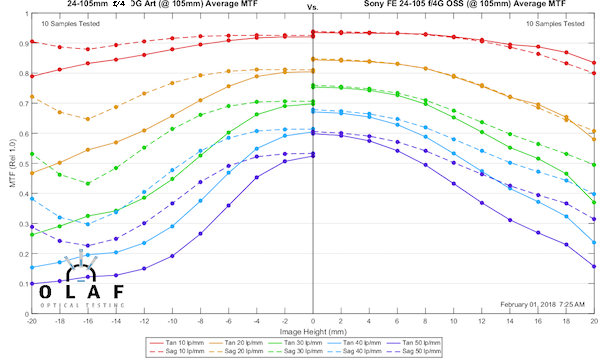
Olaf Optical Testing, 2018
It’s a theoretical question, could we see this difference in an image? I doubt you could see any difference at 70mm. I’m comfortable you could tell the Sony was a bit better at 105mm, and in the very center, you’d notice the Sigma was sharper at 24mm.
Sony FE 24-105mm f/4 OSS vs Canon 24-105mm f/4 IS II
At 24mm
The Canon is an older design, and the Sony is better both in the center and away from the center.
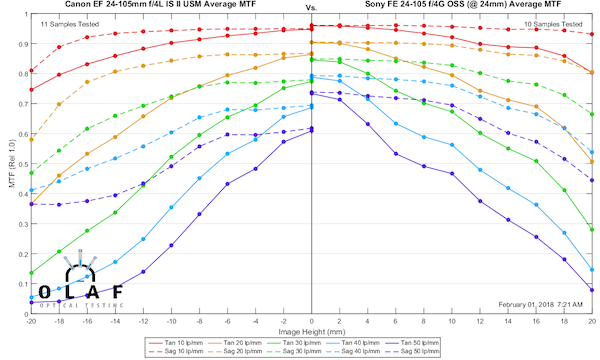
Olaf Optical Testing, 2018
At 70mm
The Canon is at it’s best at 70mm. The Sony is still a little better, and definitely has less separation of sagittal and tangential lines here, but it’s closer.
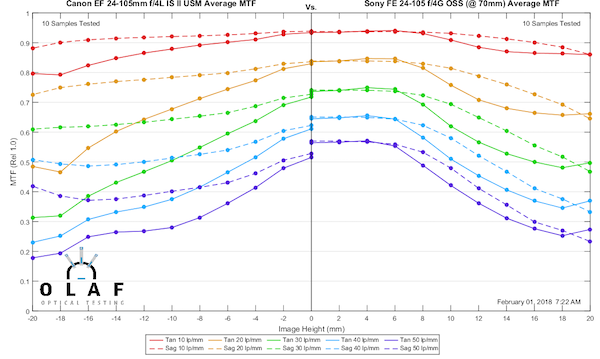
Olaf Optical Testing, 2018
At 105mm
At 105mm the difference is less dramatic, but the Sony is still a little better at every measurement.
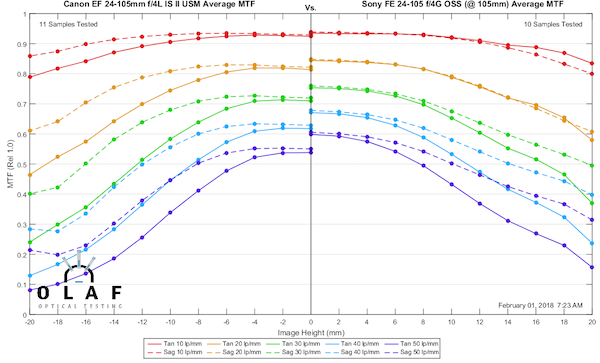
Olaf Optical Testing, 2018
Could we see this difference in an image? Yes, all other things being equal, I think you could tell the Sony was slightly better at each focal length.
Stopping Down
I guess I’m still experimenting with the best way to present the stop-down data. I’ve been taking one copy and testing it wide open and stopped down, but too many people lose their mind because the wide-open single copy looks different from the 10 lens average. So this time I’ll use the ten lens average (on the left) and compare it to the average of two lenses stopped down (on the right).
Before testing, I had been told by some reviewers I respect that the lens isn’t much sharper stopped down. One actually said he thought astigmatism got worse stopped down. I replied with the same response I use for almost everything: “Weird. Maybe it’s sample variation.” Wrong again, Roger, wrong again.
At 24mm
Well, at 24mm I have to say I don’t see much difference between f/4 and f/5.6.
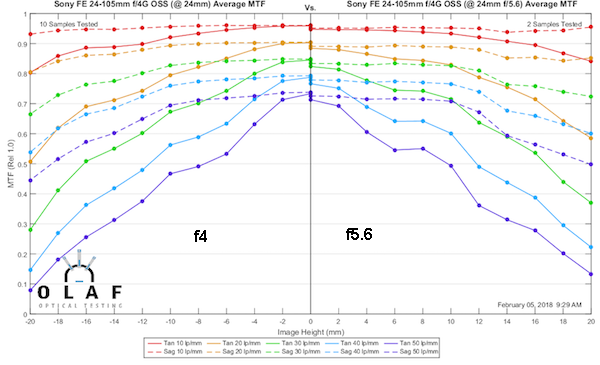
Olaf Optical Testing, 2018
At 70mm
At 70mm, the sagittal MTF (dotted lines) does improve, but the tangential (solid lines) does not; hence there is an increase in astigmatism. There actually are some excellent optical explanations for this, but there’s no need in me writing 1,000 words about it here. (Being old and wise, I’ve learned how to avoid work. If I just don’t discuss it now, Brandon will write about it in the comments tomorrow.)
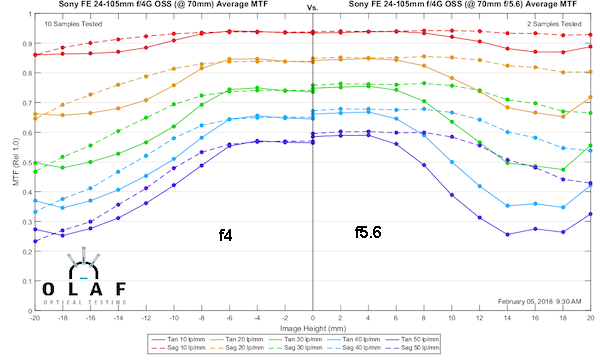
Olaf Optical Testing, 2018
At 105mm
We see precisely the same behavior at the long end; sagittal improvement while tangential stays the same and therefore astigmatism increases.
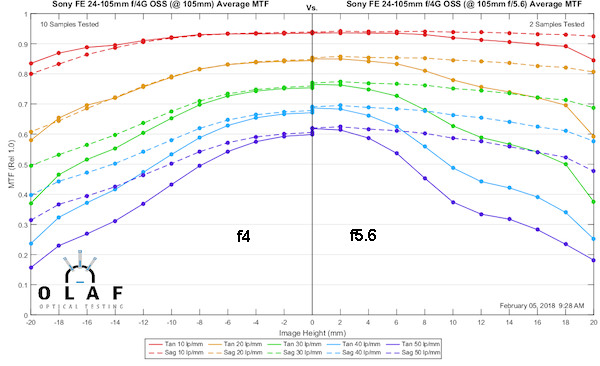
Olaf Optical Testing, 2018
Field Curvature
I tend to keep harping on the fact that field curvature (MTF vs. Field vs. Focus) graphs give us a lot more information than just an MTF graph. One thing that is interesting about this lens is that it doesn’t have a lot of sample variation on MTF, but does have a lot on field curvature. How can that be, you must wonder? (If you didn’t, well, you should!)
I’ll show you with a picture. It’s a photography blog and all, so there should be pictures. Here is a thumbnail of a field curvature graph of one copy. The point of focus is right in the center, and the MTF would be measured along the black horizontal line, from one side to the other. If you follow along that line you will see a little difference way out, like between + 18mm and – 18mm from center. But if you go from +15mm to -15mm, the MTF would be very even on both sides.
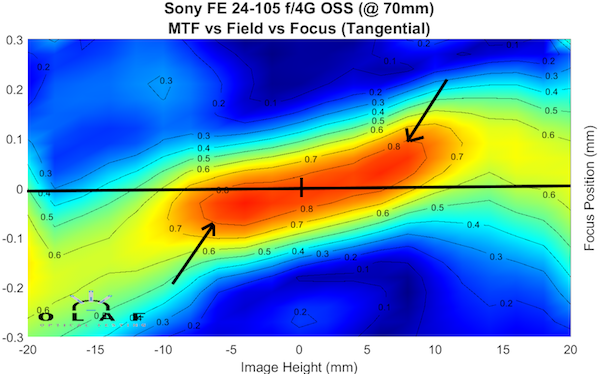
Olaf Optical Testing, 2018
But if you took a photograph of a 3-D field, with things in front of and behind the plane of focus, you’d notice that on one side, things closer to you would be in focus, while on the other side, it would be things further away that were in best focus. (I drew in some high-tech arrows to demonstrate that.) Take a picture of a wall, a test chart, or shoot a portrait and you’ll never notice. Do a landscape and you might. You see why I keep saying taking pictures can give you information that all my testing can’t?
At 24mm
These are done at f5.6 and 50 lp/mm to narrow the field a little bit. Sony has a very mild U-shaped sagittal curve (lower left) and a tangential curve (lower right), on most copies, which can best be described as complex. On some copies, the tangential field was more of a smooth ‘W’ shape (I’ll show you some later), but there was no difference in resolution between the complex copies and the ‘W’ copies.
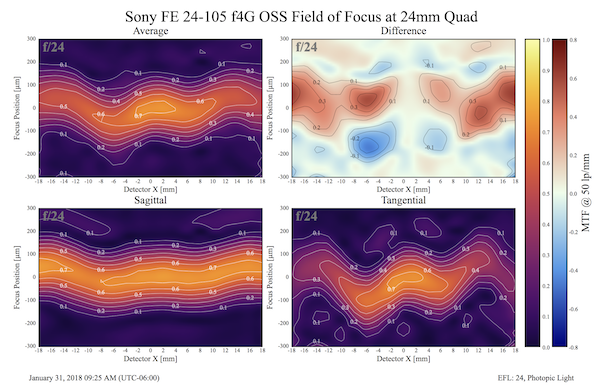
Olaf Optical Testing, 2018
At 70mm
The fields are smoother at 70mm. Notice in the Difference graph (upper right) how this copy will have a bit more astigmatism on the right side than the left.
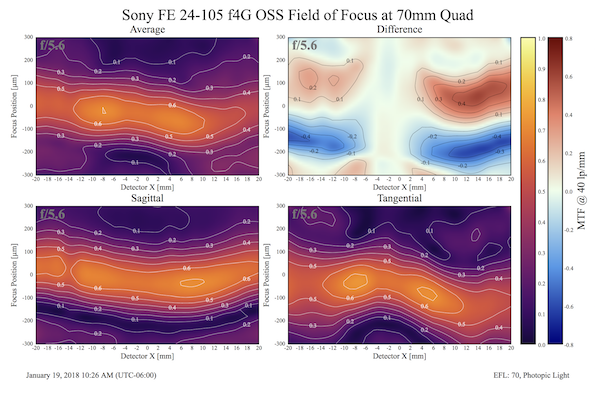
Olaf Optical Testing, 2018
At 105mm
The field at 105mm is similar to what we saw at 70mm, which isn’t surprising since these are both in the telephoto range of the zoom.
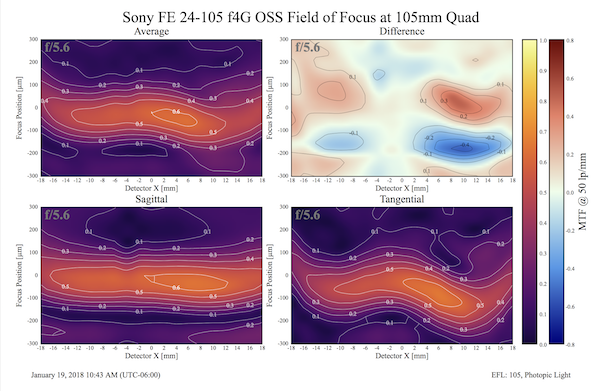
Olaf Optical Testing, 2018
Field Variation
I mentioned that these had a lot of variation in tilt of the field and at 24mm there was variation in the shape of the field. We were investigating some issues and took MTF vs. Field vs. Focus readings on all of these lenses, which we rarely do. I’m going to put a few samples up just to give you an idea of what that looked like to us. These were processed in an older software set, so they look different.
At 24mm
Here you can see the two different types of tangential field shape. Again, MTF did not correlate with the appearance of field curvature. Also, these are processed in our older software, so it looks different. The tangential field is on the left, sagittal on the right.

Olaf Optical Testing, 2018

Olaf Optical Testing, 2018

Olaf Optical Testing, 2018

Olaf Optical Testing, 2018
At 105mm
Things are similar at 105mm and 70mm, and in the interest of keeping this, well, less long, I’ll just show some of the 105mm ones. Don’t lose your mind over this; this is not severe field tilt in any single lens. Instead, I’m pointing out that every single lens has a bit of field tilt.

Olaf Optical Testing, 2018

Olaf Optical Testing, 2018

Olaf Optical Testing, 2018

Olaf Optical Testing, 2018

Olaf Optical Testing, 2018
The question you probably have, is ‘will I notice this’. The answer is not if you’re shooting test charts, flat subjects like architecture, centered subjects like portraits, or if you don’t pixel peep. But if you shoot landscapes and do pixel peep, you may notice it, or in some cases, you may notice bokeh differs on one side or the other because of astigmatism. That’s about it.
It’s a zoom, people. You can have all the fantasies you want, but chances are higher that a supermodel finds your profile on Match.com than you find a zoom that’s perfect at all focal lengths. I bring this up because if you DO pixel peep a landscape you will probably notice a field tilt and if you send the lens back you’ll get one with the field tilt on the other side or at another focal length or both.
So What Did We Learn Today?
First, hopefully, that Roger can still make a blog post without putting in the wrong graph. Time, and comments, will tell.
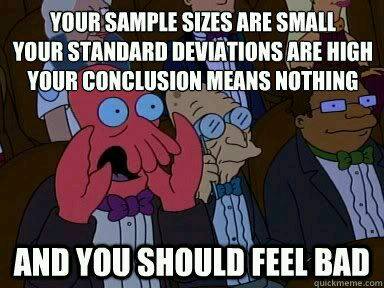
Second, that Sony has made a damn good 24-105mm f/4 lens. Damn good being a relative term, of course, because it’s a 24-105mm lens and I have come to hate them all so I can’t be too nice about it. But it’s clearly better than the Canon 24-105mm f/4 II IS, and at least as good as the Sigma 24-105mm f/4 Art or Nikon 24-120mm VR. Fanboys, may start their hair-splitting engines now about which one is two angstroms better than the other.
But if you shoot Sony and you want a minivan 24-105mm f/4, this is the best option. If you shoot a lot at the long end, it’s the best option for sure. I would recommend shooting it wide open unless you need more depth of field; you don’t gain a lot stopping down. And if you do a lot of landscape shots you might want to do some simple tests to see where the field curvature on your copy goes.
There is a pink elephant in the room; there’s been a lot of discussions that some copies have a severe focusing problem when stopped down. This is true, and I thoroughly tested one copy (it’s not included in these tests) with that behavior. Stopped down even to f/4.5 it misfocused hugely from 35mm and up. This is NOT a focus shift, as it’s being called wrongly on the internet. Focus shift is an optical issue and behaves differently. It appears to be an electronic or mechanical interaction between stopping down the aperture and the focusing system; this lens has a complex, electronically controlled focusing system. It does NOT affect all copies and if yours does this, it needs to be exchanged or fixed. I don’t think it will be a long-term problem.
The simple fact is that Sony, more than any other company, is using electronic correction to a degree that we haven’t seen before. Some seem worked up about in-camera distortion and vignetting correction for reasons I don’t really understand. The bottom line is it allows the lenses to be smaller and makes it easier to manufacture the optics, which are good things.
Having complex electronic look-up tables for focus correction should have some advantages for speed, accuracy, and correcting close-focus aberrations. However, such cutting-edge technology sometimes causes glitches. If you want to live on the cutting edge of technology, then this stuff is going to happen sometimes.
Roger Cicala and Aaron Closz
Lensrentals.com
February, 2018
Addendum: After I wrote this post, Sony announced the recall program for affected copies. You can check here to see if your SN is affected: Out of Focus Repair Program
The fix is straightforward and won’t require opening you lens, at least from what I’m told.
Author: Roger Cicala
I’m Roger and I am the founder of Lensrentals.com. Hailed as one of the optic nerds here, I enjoy shooting collimated light through 30X microscope objectives in my spare time. When I do take real pictures I like using something different: a Medium format, or Pentax K1, or a Sony RX1R.
